Nowhere has the RAN or the Australian Govt indicated any intent of operating for even a few years without any submarine capability. Moreover, one of the original Sovereign Industrial Capability Priorities is Collins Class submarine maintenance and technology upgrade. This translates into ensuring a capability is maintained until the Collins class is no longer in service.Introducing a nuclear submarine fleet has usually been done in conjunction with operating conventional submarines for as long as possible to cover roles not needing an SSN.
The US Navy were the only Cold War nation to take its conventional boats out of service altogether.
This became a problem when the old SSKs had all gone and US conventional boats could not be supplied to Taiwan for example.
The UK got rid of its 4 Upholder class as soon as the Cold War finished. Canada which had from time to time looked at an SSN force bought them with mixed results.
The RAN is unlucky in that options for submarines are not very convenient.
The US and UK no longer make SSK so only France could offer a design (and a possible SSN as well).
A UK or US SSN is thus needed for Australia but as explained above does not mesh well with the lifespan of RAN SSK.
Sources for off the shelf SSK with decent endurance are limited to France and Japan.. South Korea, Sweden, Germany, Italy, Netherlands make SSK but they lack endurance.
As the UK did with Nimrod before buying new Boeing ASW the Australians may have to live with a period of a few years where RAN crews serve with the US and RN and a US and or RN sub is assigned to work with the RAN.
France has operated a small force of SSN for many years with fewer submarines than the RN or USN.
Information about how closely this force has worked with the RN and USN does not seem to be available.
France has a "cultural" approach to working with NATO and its weapons are not always compatible with US and UK systems.
The Australians unlike the RAF were able to operate the Mirage III. (Spain another user was not a NATO member).
Shame that we can't all get along...
You are using an out of date browser. It may not display this or other websites correctly.
You should upgrade or use an alternative browser.
You should upgrade or use an alternative browser.
Replacement of Australia's Collins Class Submarines
- Thread starter GTX
- Start date
- Joined
- 15 July 2007
- Messages
- 4,889
- Reaction score
- 4,553
- Joined
- 21 April 2009
- Messages
- 13,759
- Reaction score
- 7,698

France’s New SSN Flexes Undersea Capabilities
Commissioned into service at Brest on 3 June, the attack submarine Suffren is the first of six next-generation Barracuda-class submarines for the French Marine Nationale.
@bobbymike
France’s New SSN Flexes Undersea Capabilities
Commissioned into service at Brest on 3 June, the attack submarine Suffren is the first of six next-generation Barracuda-class submarines for the French Marine Nationale.www.usni.org
I will quote the late Jacques Chirac, furious at the Israelis a day of 1996 "This is a provocation !" (I'm joking of course)
jeffb
ACCESS: Top Secret
- Joined
- 7 October 2012
- Messages
- 1,281
- Reaction score
- 1,939

Australians to train on British nuclear submarines for the first time
Australian naval officers will be allowed to train inside British submarines for the first time as they prepare for the arrival of nuclear-powered submarines as part of a new security partnership with Britain and the United States.
Royal Australian Navy submariners to train onboard British nuclear-powered submarines under AUKUS deal
Under the AUKUS deal, Royal Australian Navy sailors will join their British counterparts on the Astute-class submarines after completing specialised nuclear training courses.
Last edited:
US admiral's blunt warning on America's capacity to build Australian subs
Helping Australia acquire nuclear-powered submarines could be too big a burden for America's shipyards, a senior US Navy official warns.
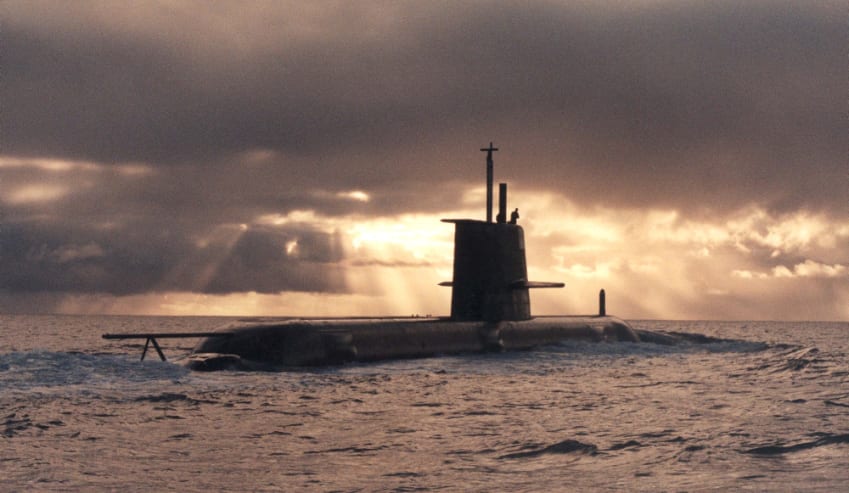
Marles backs Collins Class fleet amid operational concerns
The defence minister has said he remains confident the ageing submarine fleet would continual to meet operational requirements following reports of a technical issue with one platform while on deploym
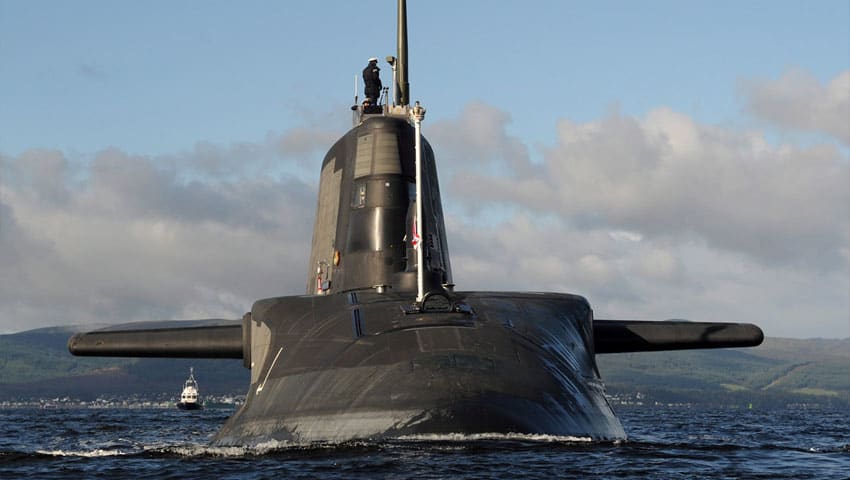
Off-the-shelf Astute Class off the table, says UK
The UK government has ruled out the possibility of an off-the-shelf sale of Astute Class SSNs to the Royal Australian Navy. The United Kingdom’s (UK) secretary of Defence, Ben Wallace, has sought
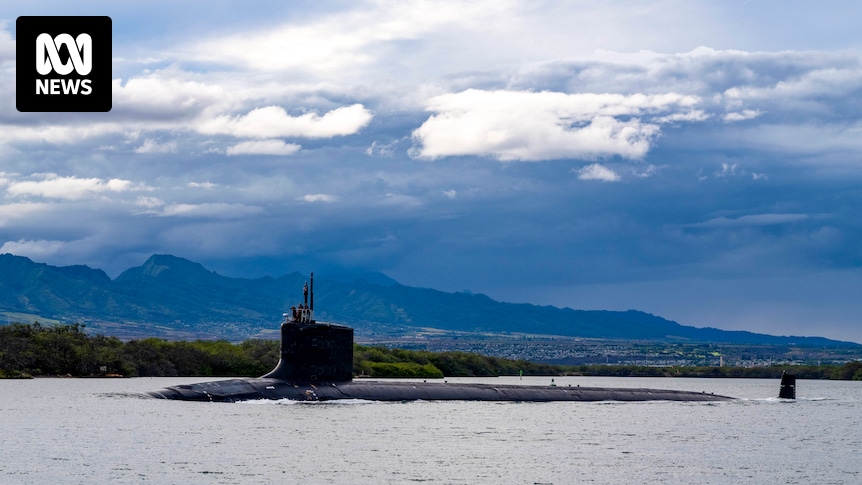
US admiral's blunt warning on America's capacity to build Australian subs
Helping Australia acquire nuclear-powered submarines could be too big a burden for America's shipyards, a senior US Navy official warns.www.abc.net.au
Well if America has no room in its SSN production schedule of Virginias for a couple of RAAN ones - then no chance in hell UK and Astutes could pull a similar trick.
Also applies to France and Barracudas, obviously - unless you remove nuclear propulsion and call then Attack oh wait forgot that...
jeffb
ACCESS: Top Secret
- Joined
- 7 October 2012
- Messages
- 1,281
- Reaction score
- 1,939
Probably bears repeating:
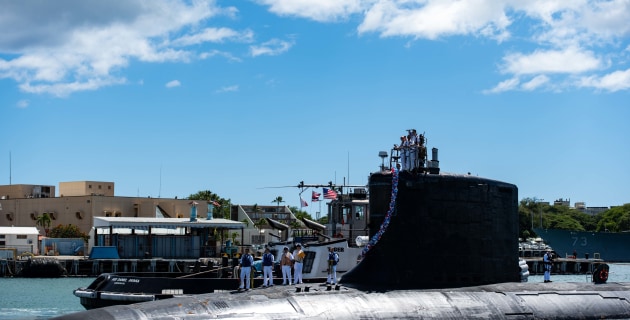
 www.australiandefence.com.au
www.australiandefence.com.au
Nothing is ever simple, and a further complication is both the US and the UK have now initiated programs for their next-generation successors to the Virginia and Astute classes.
The timing of the US SSN(X) and UK Submersible Ship Nuclear Replacement (SSNR) programs ensures their relevance to Australia, probably not as potential platforms but featuring enhanced capabilities capable of inclusion in late-build Virginia-class or Astute-class boats.
The first nuclear boat for the RAN is expected to be completed around 2035, completion of the first US SSN(X) is scheduled for 2031, while a firm timeline has yet to be disclosed for the SSNR, but it’s likely to be required around 2035 when first-of-class HMS Astute completes 25 years of service.

Which submarine will Australia build? - Australian Defence Magazine
Now it’s been decided that the RAN is to acquire a fleet of nuclear-powered hunter-killer submarines (SSNs), the question is – which one?
 www.australiandefence.com.au
www.australiandefence.com.au
Volkodav
I really should change my personal text
- Joined
- 28 March 2014
- Messages
- 750
- Reaction score
- 1,271
It depends, the new boomers have a common missile section, while NG and EB are sharing Virginia construction, each building the same sections for every boat. The Virginias in particular were deliberately designed to be modular, which has facilitated the massive block to block changes.A tri-national SSN(X)? Sounds like a recipe for disaster to me on all levels.
I can see common sections being used on three or more related designs. Say a US reactor section and an RN reactor section, US bow section, RN bow section. Common VPM sections for which ever navy wants them, pretty much everything else being common. Same basic design enables USN SSN, RN SSN and RAN SSN, as well as a USN SSGN.
kaiserd
I really should change my personal text
- Joined
- 25 October 2013
- Messages
- 1,657
- Reaction score
- 1,726
Such an approach would appear to remove the UK’s ability to independently build their own submarines (and not just those responsible for carrying the nuclear deterrent).
With such an approach the UK would make some content but inevitably it would be primarily US content (or UK licenced build of US content) in these theoretical future “British” (and/ or Australian) SSNs.
There is an argument that this capacity has really already been sacrificed (future dependence re: reactors, etc)).
However interestingly that aspect isn’t really being spelled out or explained (may not play great politically - for some may not feel like “getting back control” and instead feel more like loosing sovereign capacities).
With such an approach the UK would make some content but inevitably it would be primarily US content (or UK licenced build of US content) in these theoretical future “British” (and/ or Australian) SSNs.
There is an argument that this capacity has really already been sacrificed (future dependence re: reactors, etc)).
However interestingly that aspect isn’t really being spelled out or explained (may not play great politically - for some may not feel like “getting back control” and instead feel more like loosing sovereign capacities).
- Joined
- 16 April 2008
- Messages
- 9,606
- Reaction score
- 14,502
It depends, the new boomers have a common missile section, while NG and EB are sharing Virginia construction, each building the same sections for every boat. The Virginias in particular were deliberately designed to be modular, which has facilitated the massive block to block changes.A tri-national SSN(X)? Sounds like a recipe for disaster to me on all levels.
I can see common sections being used on three or more related designs. Say a US reactor section and an RN reactor section, US bow section, RN bow section. Common VPM sections for which ever navy wants them, pretty much everything else being common. Same basic design enables USN SSN, RN SSN and RAN SSN, as well as a USN SSGN.
But if there is an RN bow and an RN reactor (and likely an RN-specific control room), what actually is left in common between the RN and USN? Berthing? Which then has to be modified because of different accommodation standards.
Or an outstanding success which brings the strengths of all 3 nations and offers multiple sources for production and support.A tri-national SSN(X)? Sounds like a recipe for disaster to me on all levels.
Or an outstanding success which brings the strengths of all 3 nations and offers multiple sources for production and support.A tri-national SSN(X)? Sounds like a recipe for disaster to me on all levels.
More likely the former.
Jumping to conclusions on something that is purely speculative at this stage. I suggest you hold off on such negative opinions until there are some facts. And even if such a design goes ahead there is nothing to suggest this would occur.Such an approach would appear to remove the UK’s ability to independently build their own submarines (and not just those responsible for carrying the nuclear deterrent).
More of the same as above.With such an approach the UK would make some content but inevitably it would be primarily US content (or UK licenced build of US content) in these theoretical future “British” (and/ or Australian) SSNs.
Cynicism will get you nowhere. Remember that we are talking about something that is just speculation as this stage.Or an outstanding success which brings the strengths of all 3 nations and offers multiple sources for production and support.A tri-national SSN(X)? Sounds like a recipe for disaster to me on all levels.
More likely the former.
Cynicism will get you nowhere. Remember that we are talking about something that is just speculation as this stage.Or an outstanding success which brings the strengths of all 3 nations and offers multiple sources for production and support.A tri-national SSN(X)? Sounds like a recipe for disaster to me on all levels.
More likely the former.
Not cynicism. Experience.
kaiserd
I really should change my personal text
- Joined
- 25 October 2013
- Messages
- 1,657
- Reaction score
- 1,726
As it currently stands, as I understand it, the Astutes are UK designed, produced with UK technology and systems (there is inevitably some cross-sharing of knowledge and some technology with the US).
The UK sub building pattern is building their SSN class then their SSBN class then back again to maintain the ongoing capacity/ capability.
There are already points of significant convergence between UK subs and US subs plan going forward: my understanding is that the next classes of US and UK SSBNs will share the same (US designed and specified) missile sections while the UK appears to be aligning with future US reactor designs (presumably still to be built in the UK but very much the US designs).
In that context proposals to have a tri-nation future SSN is really a case of becoming a junior partner/ sub-contractor in producing the future US SSN which the UK would then effectively licence build in the UK. It makes sense from a US perspective (more subs produced for improved economies of scale, can cherry pick the minority content from the UK that suits them, etc.) and for the UK it would have significant cost advantages by greatly reducing duplication of effort/ overlap with the US etc. In fairness this may be seen by the UK as the only affordable and/or realistic direction to go in.
But such a move would inevitably eliminate the realistic ability of the UK to regenerate that independent capability and capacity (much more so than, say, even an aviation equivalent of ditching the Tempest project and the UK becoming a junior partner in the next generation US combat aircraft project).
Too much independent infrastructure, experience, knowledge etc, that couldn’t realistically be rebuilt would inevitably go away; the UK won’t be able to turn the clock back and will be dependent on the US for future submarine classes with the proportion UK content subject to future negotiations.
The UK sub building pattern is building their SSN class then their SSBN class then back again to maintain the ongoing capacity/ capability.
There are already points of significant convergence between UK subs and US subs plan going forward: my understanding is that the next classes of US and UK SSBNs will share the same (US designed and specified) missile sections while the UK appears to be aligning with future US reactor designs (presumably still to be built in the UK but very much the US designs).
In that context proposals to have a tri-nation future SSN is really a case of becoming a junior partner/ sub-contractor in producing the future US SSN which the UK would then effectively licence build in the UK. It makes sense from a US perspective (more subs produced for improved economies of scale, can cherry pick the minority content from the UK that suits them, etc.) and for the UK it would have significant cost advantages by greatly reducing duplication of effort/ overlap with the US etc. In fairness this may be seen by the UK as the only affordable and/or realistic direction to go in.
But such a move would inevitably eliminate the realistic ability of the UK to regenerate that independent capability and capacity (much more so than, say, even an aviation equivalent of ditching the Tempest project and the UK becoming a junior partner in the next generation US combat aircraft project).
Too much independent infrastructure, experience, knowledge etc, that couldn’t realistically be rebuilt would inevitably go away; the UK won’t be able to turn the clock back and will be dependent on the US for future submarine classes with the proportion UK content subject to future negotiations.
Last edited by a moderator:
As it currently stands, as I understand it, the Astutes are UK designed, produced with UK technology and systems (there is inevitably some cross-sharing of knowledge and some technology with the US).
The UK sub building pattern is building their SSN class then their SSBN class then back again to maintain the ongoing capacity/ capability.
There are already points of significant convergence between UK subs and US subs plan going forward: my understanding is that the next classes of US and UK SSBNs will share the same (US designed and specified) missile sections while the UK appears to be aligning with future US reactor designs (presumably still to be built in the UK but very much the US designs).
In that context proposals to have a tri-nation future SSN is really a case of becoming a junior partner/ sub-contractor in producing the future US SSN which the UK would then effectively licence build in the UK. It makes sense from a US perspective (more subs produced for improved economies of scale, can cherry pick the minority content from the UK that suits them, etc.) and for the UK it would have significant cost advantages by greatly reducing duplication of effort/ overlap with the US etc. In fairness this may be seen by the UK as the only affordable and/or realistic direction to go in.
But such a move would inevitably eliminate the realistic ability of the UK to regenerate that independent capability and capacity (much more so than, say, even an aviation equivalent of ditching the Tempest project and the UK becoming a junior partner in the next generation US combat aircraft project).
Too much independent infrastructure, experience, knowledge etc, that couldn’t realistically be rebuilt would inevitably go away; the UK won’t be able to turn the clock back and will be dependent on the US for future submarine classes with the proportion UK content subject to future negotiations.
Let's just agree to disagree.
Last edited by a moderator:
As as been explained before, my role as a moderator does not preclude me from participating in thread discussions.
Last edited by a moderator:
jeffb
ACCESS: Top Secret
- Joined
- 7 October 2012
- Messages
- 1,281
- Reaction score
- 1,939
It depends, the new boomers have a common missile section, while NG and EB are sharing Virginia construction, each building the same sections for every boat. The Virginias in particular were deliberately designed to be modular, which has facilitated the massive block to block changes.A tri-national SSN(X)? Sounds like a recipe for disaster to me on all levels.
I can see common sections being used on three or more related designs. Say a US reactor section and an RN reactor section, US bow section, RN bow section. Common VPM sections for which ever navy wants them, pretty much everything else being common. Same basic design enables USN SSN, RN SSN and RAN SSN, as well as a USN SSGN.
But if there is an RN bow and an RN reactor (and likely an RN-specific control room), what actually is left in common between the RN and USN? Berthing? Which then has to be modified because of different accommodation standards.
Current speculation is that the Astute successor will essentially be a shortened Dreadnought class. So, if true, lots of potential for standardisation and/or common modules.
Also, given that Dreadnought and Colombia classes are going to be based around a common missile section (slightly larger than the Ohio's to accommodate the new D5LE2), that standardisation could go even further.
Volkodav
I really should change my personal text
- Joined
- 28 March 2014
- Messages
- 750
- Reaction score
- 1,271
Submarines are extremely complex beasts, their auxiliary and hotel systems are a level beyond what you find pretty much anywhere else. Almost every system on a submarine is bespoke, the savings on standardising on even just auxiliary systems would be substantial. The savings on the cost of certifying common systems alone would be mind blowing.It depends, the new boomers have a common missile section, while NG and EB are sharing Virginia construction, each building the same sections for every boat. The Virginias in particular were deliberately designed to be modular, which has facilitated the massive block to block changes.A tri-national SSN(X)? Sounds like a recipe for disaster to me on all levels.
I can see common sections being used on three or more related designs. Say a US reactor section and an RN reactor section, US bow section, RN bow section. Common VPM sections for which ever navy wants them, pretty much everything else being common. Same basic design enables USN SSN, RN SSN and RAN SSN, as well as a USN SSGN.
But if there is an RN bow and an RN reactor (and likely an RN-specific control room), what actually is left in common between the RN and USN? Berthing? Which then has to be modified because of different accommodation standards.
Optronics, radars, propellers, control surfaces, control systems, electric motors, power control systems, sewerage systems, oxygen generation, firefighting, escape systems, emergency breathing, emergency diesel and batteries.....
Volkodav
I really should change my personal text
- Joined
- 28 March 2014
- Messages
- 750
- Reaction score
- 1,271
The reality is the UK ad a submarine design and building blackhole before the Astutes that meant they had serious issues with the project due to loss of institutional knowledge. The fix they used was to reach out to the US, EB specifically, to help them get over the issues. Don't get me wrong the Astutes are great boats, but they were built with substantial US help.
The UK sub building pattern is building their SSN class then their SSBN class then back again to maintain the ongoing capacity/ capability.
There are already points of significant convergence between UK subs and US subs plan going forward: my understanding is that the next classes of US and UK SSBNs will share the same (US designed and specified) missile sections while the UK appears to be aligning with future US reactor designs (presumably still to be built in the UK but very much the US designs).
In that context proposals to have a tri-nation future SSN is really a case of becoming a junior partner/ sub-contractor in producing the future US SSN which the UK would then effectively licence build in the UK. It makes sense from a US perspective (more subs produced for improved economies of scale, can cherry pick the minority content from the UK that suits them, etc.) and for the UK it would have significant cost advantages by greatly reducing duplication of effort/ overlap with the US etc. In fairness this may be seen by the UK as the only affordable and/or realistic direction to go in.
But such a move would inevitably eliminate the realistic ability of the UK to regenerate that independent capability and capacity (much more so than, say, even an aviation equivalent of ditching the Tempest project and the UK becoming a junior partner in the next generation US combat aircraft project).
Too much independent infrastructure, experience, knowledge etc, that couldn’t realistically be rebuilt would inevitably go away; the UK won’t be able to turn the clock back and will be dependent on the US for future submarine classes with the proportion UK content subject to future negotiations.
Last edited by a moderator:
I think its to early to have any idea what will happen, and its hard to picture a way forward given US/UK production limitations which would be necessary at a minimum for the reactor spaces. Presumably more will be known after the 18 month review.
- Joined
- 6 September 2006
- Messages
- 4,834
- Reaction score
- 9,460
Fun factoid, HMS Anson is the last Royal Navy vessel to be commissioned as Her Majesty's Ship this century at least and will probably hold the record as the shortest time actually commissioned as such before becoming His Majesty's Ship.
- Joined
- 21 May 2006
- Messages
- 3,002
- Reaction score
- 2,280
Indonesia claims success in fight over AUKUS nuclear subs
Amid anxiety about Australia’s submarine plans under its pact with the US and Britain, Jakarta says its bid for stricter regulations on nuclear naval power has won wide support.
Regards
Pioneer
Volkodav
I really should change my personal text
- Joined
- 28 March 2014
- Messages
- 750
- Reaction score
- 1,271
This may actually help AUKUS as the original Chinese push through other parties was aimed as killing the RAN nuclear power option, this however is aimed at increasing safeguards which could make it more certain that the RAN option will proceed.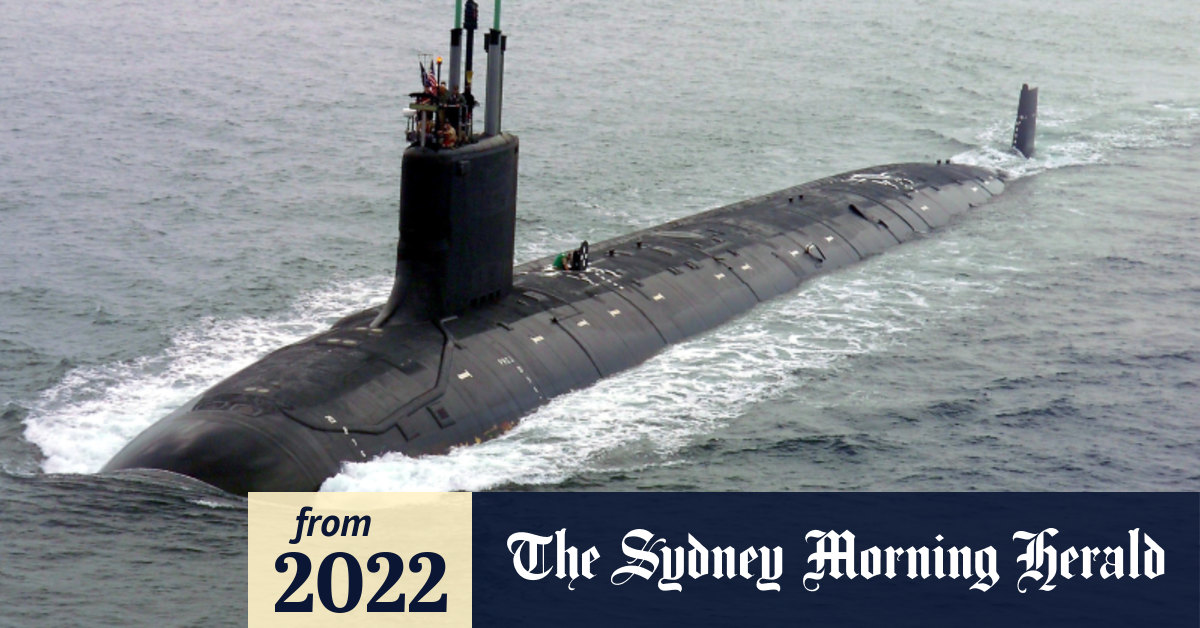
Indonesia claims success in fight over AUKUS nuclear subs
Amid anxiety about Australia’s submarine plans under its pact with the US and Britain, Jakarta says its bid for stricter regulations on nuclear naval power has won wide support.www.smh.com.au
Regards
Pioneer
Remove the loop holes that other countries may use to acquire nuclear weapons through the back door of nuclear power and the RAN case looks better and better.
jeffb
ACCESS: Top Secret
- Joined
- 7 October 2012
- Messages
- 1,281
- Reaction score
- 1,939
Just another argument for why LEU is a better option.This may actually help AUKUS as the original Chinese push through other parties was aimed as killing the RAN nuclear power option, this however is aimed at increasing safeguards which could make it more certain that the RAN option will proceed.
Indonesia claims success in fight over AUKUS nuclear subs
Amid anxiety about Australia’s submarine plans under its pact with the US and Britain, Jakarta says its bid for stricter regulations on nuclear naval power has won wide support.www.smh.com.au
Regards
Pioneer
Remove the loop holes that other countries may use to acquire nuclear weapons through the back door of nuclear power and the RAN case looks better and better.
Someone isn't happy...
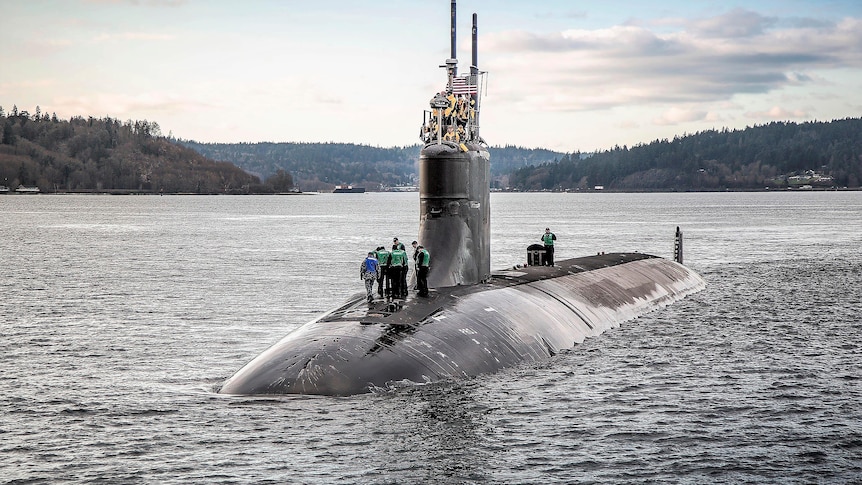
 www.abc.net.au
www.abc.net.au
China launches furious attack on UN nuclear watchdog for 'lopsided' AUKUS report
China's Foreign Affairs Ministry has launched a furious attack on the UN nuclear watchdog, accusing it of issuing a "lopsided" report about Australia's plan to build nuclear submarines while ignoring widespread concerns about its ramifications for non-proliferation.
kaiserd
I really should change my personal text
- Joined
- 25 October 2013
- Messages
- 1,657
- Reaction score
- 1,726
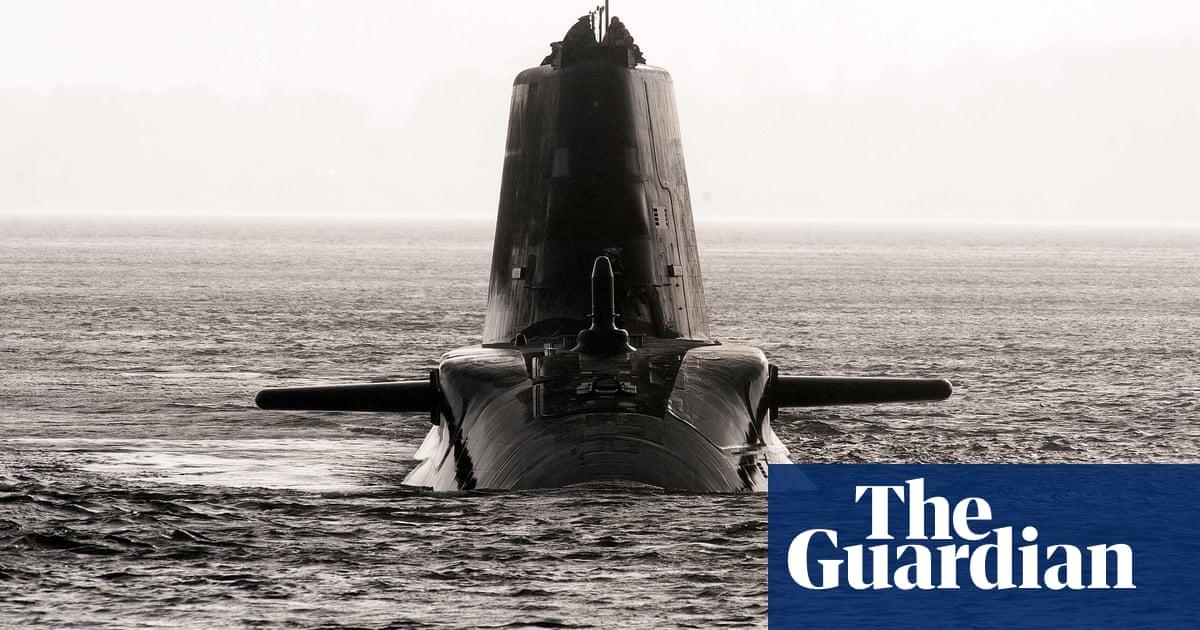
A year on from Aukus, doubts grow about its future as China muscles up
While some progress has been made, analysts fear China is leaping ahead in capabilities and the defence department doesn’t sense the urgency
A year into the AUKUS partnership, the government insists Australia's nuclear subs are on track
An ambitious plan from AUKUS partners could see Australia's future nuclear submarine also operated by the US and the UK, but the government has so far refused to be drawn on any cost estimates for the massive project.
NeilChapman
Interested 3rd party
- Joined
- 14 December 2015
- Messages
- 1,317
- Reaction score
- 547
Perhaps it's too obvious to state...the US has the advantage of adding block changes to a continuous production line in Virginia-class boats. The economy of scale, expertise, and production experience on a given platform is an objective fact. The UK loses all three when production of one class stops to build another.Probably bears repeating:
Nothing is ever simple, and a further complication is both the US and the UK have now initiated programs for their next-generation successors to the Virginia and Astute classes.
The timing of the US SSN(X) and UK Submersible Ship Nuclear Replacement (SSNR) programs ensures their relevance to Australia, probably not as potential platforms but featuring enhanced capabilities capable of inclusion in late-build Virginia-class or Astute-class boats.
The first nuclear boat for the RAN is expected to be completed around 2035, completion of the first US SSN(X) is scheduled for 2031, while a firm timeline has yet to be disclosed for the SSNR, but it’s likely to be required around 2035 when first-of-class HMS Astute completes 25 years of service.

Which submarine will Australia build? - Australian Defence Magazine
Now it’s been decided that the RAN is to acquire a fleet of nuclear-powered hunter-killer submarines (SSNs), the question is – which one?www.australiandefence.com.au
It is likely, at some point, the US will decide that a larger diameter boat is advantageous for their fast attack platform. Whether that is initiated in the follow-on to block 5 Virginia's or a block 6 is selected (based largely on block 5 with its cost advantages) may be a substantive decision factor for the RAN. A larger diameter boat being a more expensive proposition. If this replacement boat is larger, and based on the Columbia platform and its existing production line may mitigate but...a 43' diameter boat is egregiously expensive - let alone the inshore facilities required to support them.
However, I still believe Australia will benefit most, in submarine program and security, by designing their agreements with the US firmly around guarantees of servicing and supporting US boats as well as ensuring the US will decommission the boats they purchase. This would require US DoD oversight of EB and HII assistance to Australia in designing, building, and training shipyard personnel for some period of time, perhaps a decade. Perhaps the same deal could be made with the UK but they lack depth of production, money, and largess that the US enjoys. The concern the US has re the CCP offers leverage that will carry weight in these negotiations, perhaps more so than the UK. Either way, I hope they will use them.
Leaked document sheds light on cancellation of French subs contract
A leaked confidential document gives an insider's perspective on how the Morrison government went about cancelling the French submarine contract, highlighting how officials running the contract were kept in the dark.
You gonna like the reactivity of French media. They are presently grasping the August 5 Australian headline, only six weeks late. Opex 360 is a valuable resource nonetheless, but REALLY - they are a bit late ! And then the Huffpost react to Opex 360. That's why I checked my sources before posting - the Huffpo ain't very good at military matters.
Bottom line: see you next March for a proposal to build four Attack subs in France (not Australia) to fill the gap with the AUKUS SSN... eventually ! The Swedes are also on the case, and all the other SSK builders probably (Sweden Spain, Germany, South Korea, Japan...) and of course a Collins massive upgrade.
Bottom line: see you next March for a proposal to build four Attack subs in France (not Australia) to fill the gap with the AUKUS SSN... eventually ! The Swedes are also on the case, and all the other SSK builders probably (Sweden Spain, Germany, South Korea, Japan...) and of course a Collins massive upgrade.
Here’s the full note written by Kim Gillis… I haven’t had time to read the whole thing but certainly he seems like one of the best positioned experts to talk about the history of the Attack program.
Leaked document sheds light on cancellation of French subs contract
A leaked confidential document gives an insider's perspective on how the Morrison government went about cancelling the French submarine contract, highlighting how officials running the contract were kept in the dark.www.abc.net.au
I was a member of the Naval Group Australia Board since January 2021 and resigned as an Independent Director of Naval Group Australia on the 30th of June this year. I write this to you in my personal capacity to the last few remaining NGA staff members and to those who have left the business.
For some context, I retired four years ago as the Deputy Secretary CASG. I am in the unique position of having been involved in the Competitive Evaluation Process (CEP), the decision to select Naval Group, the negotiations of the contract and SPA and as an Independent Director for Naval Group Australia. After I retired from Defence, I was asked by
MINDEF to return to assist in finalising the negotiations between Naval Group France and Defence so that the Strategic Partnering Agreement (SPA) could be signed.
I was asked by Pierre Éric Pommellet to join the Naval Group Board in late December 2020 as an independent Director. I accepted that offer with some trepidation because like many of you, much of what I had heard or read about the program in the media was negative. I was however so impressed with Pierre Éric and the calibre of my fellow directors that I decided to accept the role. And like many of you I was excited about the challenge of being involved Australia’s most complex and challenging program.
The purpose of this note is twofold firstly to express my pride in NGA’s contribution to the submarine program and to recognise the sacrifices that each one you and your families have made. Secondly, I would like to provide you with a personal perspective into the schedule and cost blowout commentary that contributed to the decision made by the Government in 2020. These are my own views and may not reflect the views of the any of the ex Naval Group Australia Board or even the Board of Naval Group France.
(Continues in linked document)
Attachments
Last edited:
jeffb
ACCESS: Top Secret
- Joined
- 7 October 2012
- Messages
- 1,281
- Reaction score
- 1,939
Standouts for me:
Recommended reading (by Kim Gillis):

 fas.org
fas.org
It would also be prudent for the Commonwealth to include the Suffren Class submarine option in any evaluation of a future nuclear submarine capability. This is for the following reasons. It is the most modern Nuclear submarine in the world. It is at a size, crewing and capability that best fits the Australian requirements. It is the most cost effective nuclear submarine solution both for construction and sustainment and critically it utilises Low Enriched Uranium (LEU) as a source for power generation making it fully compliant with both the rules and intent of the IAEA and Australia’s commitments to support Nuclear non-proliferation. And finally and critically to the defence of Australia it is the only option that offers full sovereignty over the deployment of the asset. Neither of the US or UK options will provide a sovereign capability and we would be reliant on operational preapprovals from the US to operate and deploy our most important Defence assets.
Recommended reading (by Kim Gillis):
For anyone who would like more information on LEU vs HEU the best article that I have found is by George Moore titled “Life of Ship Reactors and accelerated Testing” Federation of American Scientist, March 2017.
Life-of-the-Ship Reactors and Accelerated Testing of Naval Propulsion Fuels and Reactors - Federation of American Scientists
This special report is a result of the FAS U.S.-French Naval Nuclear Task Force and is focused on the life-of-the-ship reactors and role of accelerated testing on naval propulsion fuels and reactors. The report is written by Dr. George Moore.
Last edited:
- Joined
- 15 July 2007
- Messages
- 4,889
- Reaction score
- 4,553
Don't make the lazy assumption that it was beyond UK capability. It was a timing and cost issue only.Don't get me wrong the Astutes are great boats, but they were built with substantial US help.
It's likely this is what holds back the Astute Option.
Similar threads
-
-
-
-
-
Sukarno stays in power - what would Australia do?
- Started by Dilandu
- Replies: 560
